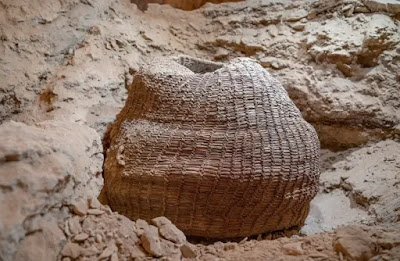Archaeologist Chaim Cohen says the four-year project has been vital to protect the treasures inside the cave system from future plunder.
"This project is the protection of the area because, again, it is almost impossible to beat the looters," he said. "They're working, and the solution was to get to the case before the looters."
The massive excavation site spans parts of southern Israel and the Israeli-occupied West Bank. Israel has long been criticized for removing objects found in the Palestinian territories.
According to international law, taking cultural property from an occupied territory is forbidden, but those concerns haven't prevented the Israeli Antiquities Authority from putting the discoveries on display.

Both the belief that humans were created only six thousand years ago and the ‘Gap Theory’ that posits an earlier creation which was eradicated and replaced six thousand years ago by another creation make clearly testable predictions. The former would have no human fossils or artifacts older than six thousand years in the archaeological record, while the latter would show clear signs of a destruction six thousand years ago and no sign of continuity between human remains / artifacts on either side of this six thousand year old destruction layer. It goes without saying that we see neither. What we do see is continuity and human antiquity, stretching back well before six thousand years ago:“The transition from the food-gathering phase to fully developed agriculture and pastoralism was a long process which began in the Near East around 10,500 B.C.E. and lasted several thousands of years. It was accompanied by changes in social organization and economic activity which expressed themselves in the establishment of settled communities and the eventual birth of the ancient Near Eastern civilizations. Some of the most important steps in this development can be traced in Palestine.”
Read more on what he has to say:
How a 10,000 year old basket (and the whole archaeology of Neolithic and Chalcolithic Palestine) falsifies the fundamentalist belief in a Seven Thousand Year Plan